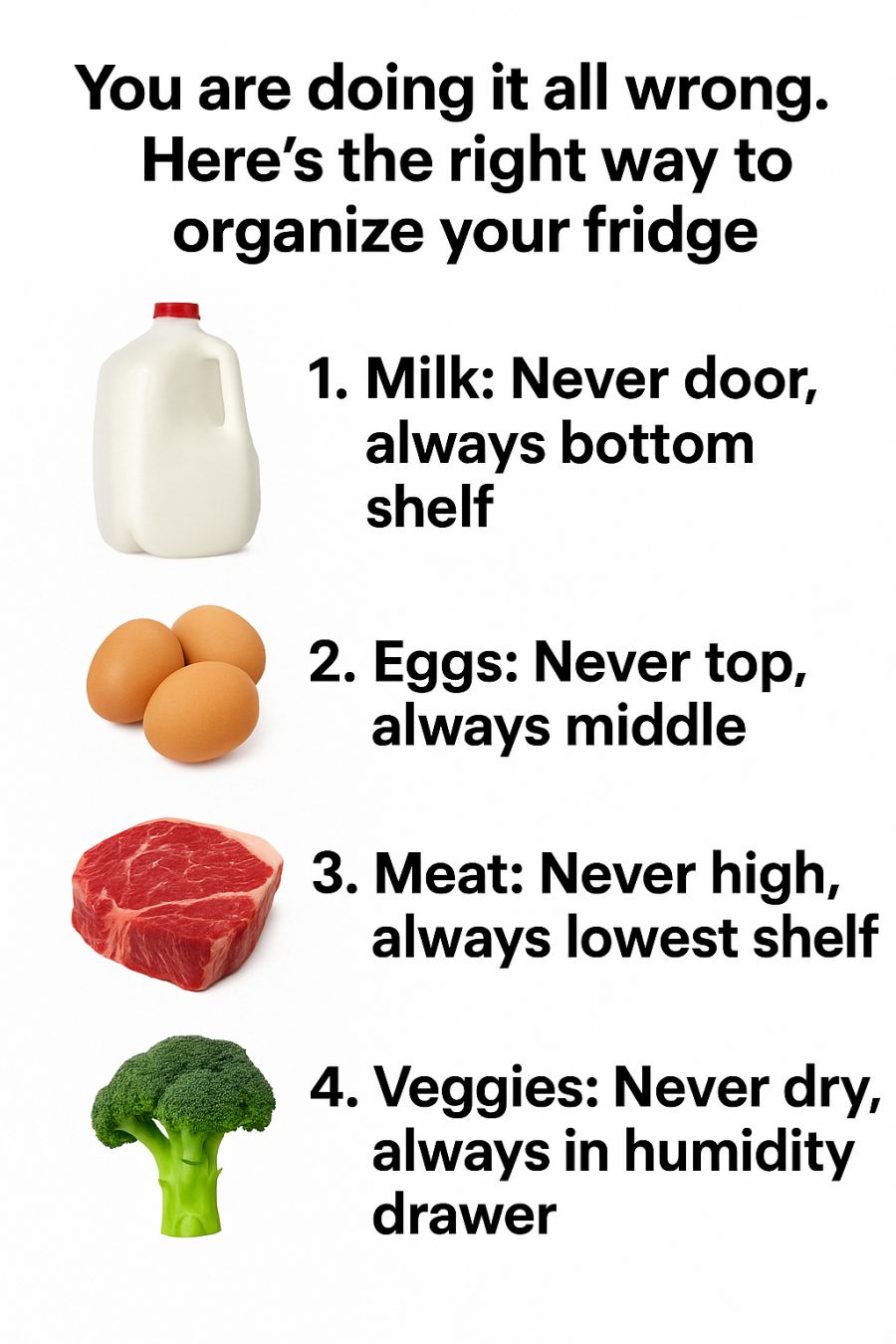A well-organized fridge is more than just pleasing to the eye; it’s a key component of food safety and efficiency in the kitchen. Unfortunately, many people are guilty of shoving items wherever they fit, leading to food spoilage, waste, and even health risks. Understanding the best way to organize your fridge can help you make the most of your groceries, save money, and reduce food waste.
In this guide, we’ll walk you through each section of your fridge, explaining how to store different types of food for optimal freshness and safety. From the top shelf to the crispers, and even the freezer, you’ll learn the science behind fridge organization and how to implement it effectively in your home.
1. The Science of Fridge Organization: Why It Matters
Proper fridge organization is not just about aesthetics; it plays a crucial role in food preservation. Different areas of the fridge maintain slightly different temperatures, which can affect the freshness and safety of your food. For instance, the top shelves are warmer than the bottom shelves due to the natural circulation of cold air. This means that the placement of food items should be strategic to maximize their shelf life.
Additionally, a well-organized fridge helps prevent cross-contamination and makes it easier to access and monitor food items, reducing the likelihood of forgotten leftovers and expired products. Keeping a consistent temperature, ideally below 40°F (4°C), is essential for slowing bacterial growth and ensuring food safety. By understanding these principles, you can store your groceries more effectively and keep your food fresher for longer.
2. Top Shelf: Perfect for Drinks and Leftovers
The top shelf of your fridge is typically the most consistent in temperature, making it an ideal spot for drinks and ready-to-eat foods like leftovers. Since this area is not as cold as the lower shelves, it’s a poor choice for perishable items like raw meat but perfect for items that are less susceptible to spoilage.
Leftovers should be stored in clear, airtight containers and labeled with the date to ensure they are consumed in a timely manner, typically within 3-4 days. Drinks can be stored here for easy access, but be mindful of the weight and space they take up, especially with larger bottles.
3. Middle Shelves: Ideal for Dairy and Eggs
The middle shelves maintain a consistent and cold temperature, which is perfect for storing dairy products like milk, cheese, and yogurt. These items are sensitive to temperature fluctuations, so keeping them in the middle helps preserve their quality and safety.
Eggs, despite common practice, should be stored on an interior shelf rather than the door to maintain a steady temperature. Ensure they remain in their original carton to prevent moisture loss and protect them from absorbing odors from other foods.
